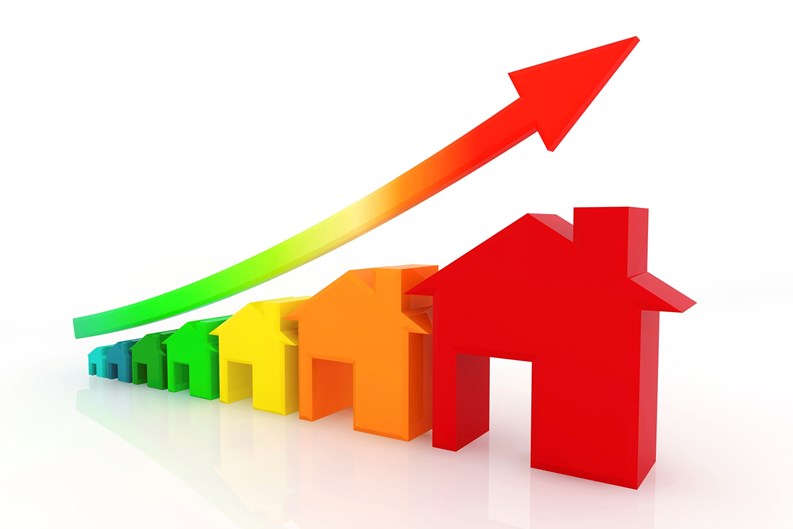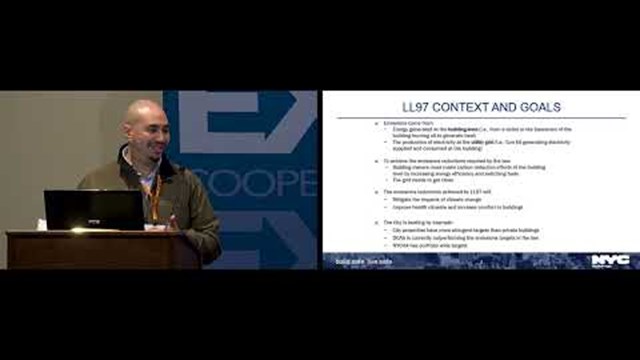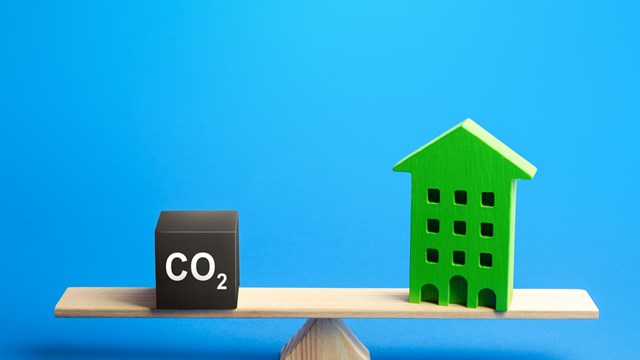In 2016, seven years into the greening of New York City we can happily report that compliance with Local Laws 84 & 87 which provide for the monitoring and upgrading of energy sourcing and usage stands at 100 percent, according to the de Blasio administration. A report issued on August 24, 2016 indicates that greenhouse gas emissions have dropped by 8% and energy use by 6% between 2010 and 2013 as a result of benchmarking compliance reporting from 3,000 buildings.
Passed in 2009 by the Bloomberg administration, Local Laws 84 and 87, then called the Greener, Greater Buildings Plan (PlaNYC), are the cornerstones of New York City’s efforts to make New York a leader in green living. The de Blasio administration has continued these programs though they have renamed the program: OneNYC.
“Thanks to the data in this report, we can identify areas to reduce our energy consumption and continue this downward trend of greenhouse gas emissions, getting us closer to our 80x50 OneNYC goal. This is yet another tool that will create a more sustainable, equitable and resilient city,” said Mayor de Blasio in a press release. The 80x50 goal stands for 80% reduction in greenhouse gas emissions by the year 2050.
As defined on the New York City Office of Sustainability website, Local Law 84 requires annual benchmarking data to be submitted by owners of buildings with more than 50,000 square feet for public disclosure by May 1. The law requires annual reporting of each building’s use of energy and water. Buildings use Portfolio Manager, a free online benchmarking tool that tracks and assesses energy and water consumption. Developed by the U.S. Environmental Protection Agency's (EPA) ENERGY STAR program, Portfolio Manager can help building owners identify opportunities to make their buildings more energy and water-efficient and save money.
Local Law 87 mandates that buildings over 50,000 gross square feet undergo periodic energy audit and retro-commissioning measures. The intent of this law is to inform building owners of their energy consumption through energy audits, which are surveys and analyses of energy use, and retro-commissioning, the process of ensuring correct equipment installation and performance.
Submit an Annual Report
In addition to benchmarking annual energy and water consumption, energy audits and retro-commissioning will give building owners a much more robust understanding of their buildings’ performance, eventually shifting the market towards increasingly efficient, high-performing buildings. In summary, LL 87’s energy audit and retro-commissioning process requires that a building needs to comply, and what year it is due. One must conduct an energy audit and retro-commissioning of base building systems and complete an Energy Efficiency Report (EER) electronically. The EER must be submitted once every ten years to the city by December 31. The year designated LL 87 audit is based on the last digit of the block number assigned to a particular building. So, for instance if your building block ends in a 6 your LL87 energy audit is required in 2016.
Clearly, energy is money. And in big co-op apartment or condo buildings, energy is big money—we’re talking thousands upon thousands of dollars in savings...or waste. Most folks know that turning off lights in unoccupied rooms, taking shorter showers, and turning down the thermostat a couple of degrees can help save energy—and by extension, money. Helping an entire building cut costs and reduce its carbon footprint can be a little trickier, however—which is why many co-op and condo buildings hire professional energy consultants to assess their energy profile and make recommendations as to how it might be improved.
It’s very important for boards and management to understand what energy consultants are looking for when assessing their buildings, and how they work with the boards and managers to suggest and to implement greener, money-saving measures for buildings of every size.
“The overall goal of these laws was and is to promote a citywide reduction in energy consumption,” says George Crawford, principal of Manhattan-based Green Partners, a New York State Energy Research & Development (NYSERDA)-approved energy efficiency consulting firm specializing in cost-effective strategies for buildings larger than 50,000 square feet. “Benchmarking information and scores can be helpful in evaluating buildings’ energy performance,” Crawford says. “Below-average benchmarking scores can signal excessive energy consumption.”
Give Me and 84 and an 87
Together, these two laws are meant to demonstrate to both the state and the building itself how much energy the building is using. One can naturally build on the other. “If done correctly,” says Josh Soble, an account manager with Bright Power, an energy consulting engineering firm that provides services to building owners for Local Laws 84 & 87, “Local Law 84 benchmarking can point the engineer in the right direction for Local Law 87 audits. If you do your benchmarking work with the intention of trying to understand how energy is consumed at your property you ask ‘How is my heating system working, versus how is the gas fuel that’s being used on my site performing? The benchmarking work can be a great platform to jump into an energy audit and it’s a great place for the engineers to start their work.”
While Local Law 84’s benchmarking report must be completed every year, Local Law 87’s work which includes an audit and retro-commissioning, must be completed every 10 years. “Retro-commissioning is making sure all of the existing systems on-site are running as efficiently as possible and are optimized to be running sort of how they were originally designed. The energy audit requires a full ASHRAE Level 2 energy audit and recommendations to improve overall energy efficiency.” The work recommendations from these audits and reports fall into three categories; must do, should do and recommended but not required.
The most common repairs required that also result in substantial energy savings include boiler control settings, filling gaps in doorways and insulating hot water pipes. “There are also energy conservation measures that are not required but recommended,” says Kelly Dougherty, a LEED Green associate and the director of energy management at FSEnergy, a New York-based energy consultancy affiliated with FirstService Residential. “The recommended projects that get easily adopted by most co-op boards generally demonstrate a ROI of 20 percent and a payback period of five years or less.”
Some large scale projects are less likely to be undertaken unless they fall into the mandatory column. A good example of this type of project is “steam traps in individual radiators,” explained Adam Boese, a principal at The Daylight Savings Company, an energy efficiency consultant/engineering firm in Goshen, New York. “Steam traps are common to all steam-heated buildings. Nobody changes them unless they have to. And they need to be changed every two to three years. One of the first questions we ask if to you have a steam trap replacement program. And the answer is always yes, we replace them as they fail. Well, that’s not a program because one failing will cause the others to fail. This is the cause of low and high heat complaints.”
There are steam traps in every radiator, in every room, in every apartment. The cost to replace the traps can run from $200 to $500 per trap. In a 50-unit co-op that could result in a repair bill of between $30,000 and $75,000. “No one budgets for this,” says Boese. “But if a deficiency is found under the law it must be corrected. Steam systems fall under the law, so potentially steam traps can be a mandatory repair.”
Though an expensive repair, “steam trap replacement will pay for itself. It can save between 5% and 20%ent on heating use annually. More importantly it will make people comfortable.” While this can be a pretty extreme case that could cause a co-op board ‘meltdown,’ Boese says, major issues lead to complaints, resulting in more frequent attention to and repair of problems.
For co-op boards and condo associations, though, this process can become overwhelming. Cynthia Graffeo, a property manager with Douglas Elliman, reports that many management firms have a compliance manager to help the process along. “The compliance manager’s role is to ensure and follow up so that all of the buildings in our portfolio are compliant with all local laws. For the portfolio of buildings that I personally manage I also make sure all the buildings are compliant.”
Graffeo explained that she guides the co-op or condo boards through the process. Initially they help the boards to find an appropriate engineer to do the reports. Generally the boards have a mixed reaction to the findings, which in most buildings will require some work to be done.
“Ultimately,” Graffeo says, “Most boards when they see the projected payback and savings benefitting from the energy laws realize that it’s a good thing. But there are times when they groan. We just had a situation like this in a building where the boiler controls were really old and energy inefficient. The retro-commissioning work for the boiler plant is currently being bid out, but they initially sent it to bid to their current boiler company and when estimates came back I personally gasped! I told the property manager to seek out a few different boiler companies and make sure that the engineer looks at all the bids to ensure the quotes are specific to the work that needs to be done.” Involvement by capable management clearly is critical, especially in co-op and condo scenarios where owners are not necessarily well versed in the dynamics of property management.
Timing is another important factor in compliance with these local laws. Local Law 84 benchmarking must be completed annually and if it is not there are hefty fines that no co-op or condo board or landlord for that matter wants to pay. Local Law 87 review is required only every ten years but is time consuming and must be scheduled with that in mind. Graffeo says that notification and the process should begin at least a year in advance. “For instance,” she says, “the boiler work I mentioned, while you could do that work in the summer, in order to really fully test it you need to be in the fall or winter. So that’s why sometimes it could take nine months in order to do that.”
“Retro-commissioning does, in fact allow buildings to benefit financially from energy savings,” said Graffeo. “The other aspect to that is that buildings achieve a certain score level with respect to benchmarking. Buildings that achieve great energy compliance levels can actually advertise that, which looks really good. It’s a nice marketing tool as well, which makes buildings more attractive to those looking to buy.”
The best advice she can give her clients, says Dougherty is “be prepared and don’t wait,” even if you have 10 years to fulfill Local Law 87 requirements.
After all, the sooner improvements are made, the best to help your buildings save money and improve New York City’s environment at the same time.
A.J. Sidransky is a novelist and a staff writer for The Cooperator and other publications.










Leave a Comment